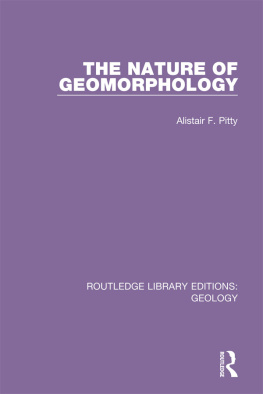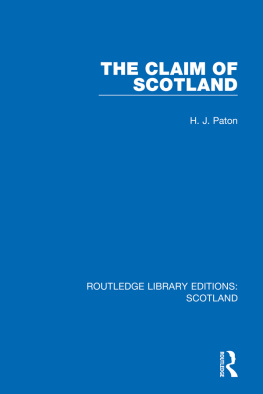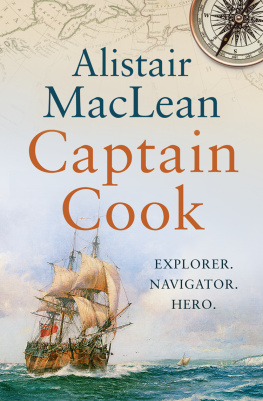Alistair Paton - Of Marsupials and Men
Here you can read online Alistair Paton - Of Marsupials and Men full text of the book (entire story) in english for free. Download pdf and epub, get meaning, cover and reviews about this ebook. year: 2022, publisher: Black Inc., genre: Non-fiction. Description of the work, (preface) as well as reviews are available. Best literature library LitArk.com created for fans of good reading and offers a wide selection of genres:
Romance novel
Science fiction
Adventure
Detective
Science
History
Home and family
Prose
Art
Politics
Computer
Non-fiction
Religion
Business
Children
Humor
Choose a favorite category and find really read worthwhile books. Enjoy immersion in the world of imagination, feel the emotions of the characters or learn something new for yourself, make an fascinating discovery.
- Book:Of Marsupials and Men
- Author:
- Publisher:Black Inc.
- Genre:
- Year:2022
- Rating:4 / 5
- Favourites:Add to favourites
- Your mark:
- 80
- 1
- 2
- 3
- 4
- 5
Of Marsupials and Men: summary, description and annotation
We offer to read an annotation, description, summary or preface (depends on what the author of the book "Of Marsupials and Men" wrote himself). If you haven't found the necessary information about the book — write in the comments, we will try to find it.
Of Marsupials and Men — read online for free the complete book (whole text) full work
Below is the text of the book, divided by pages. System saving the place of the last page read, allows you to conveniently read the book "Of Marsupials and Men" online for free, without having to search again every time where you left off. Put a bookmark, and you can go to the page where you finished reading at any time.
Font size:
Interval:
Bookmark:

Published by Black Inc.,
an imprint of Schwartz Books Pty Ltd
2224 Northumberland Street
Collingwood VIC 3066, Australia
www.blackincbooks.com
Copyright Alistair Paton 2022
Alistair Paton asserts his right to be known as the author of this work.
ALL RIGHTS RESERVED.
No part of this publication may be reproduced, stored in a retrieval system, or transmitted in any form by any means electronic, mechanical, photocopying, recording or otherwise without the prior consent of the publishers.
9781760643645 (paperback)
9781743822487 (ebook)

Cover design by Tristan Main
Text design and typesetting by Tristan Main
Index by Belinda Nemec
Cover images: Quokka, Rottnest Island: Lisa / Adobe Stock
Blue sky: merrymuuu / Shutterstock. Binoculars: fractu1 / Shutterstock
Butterfly net: Dimedrol68 / Shutterstock. Helmet: Dja65 / Shutterstock
Landscape: Rex Nan Kivell Collection, National Library of Australia, NK7429/B
Introduction
We are almost inclined to believe that Nature has been leading us through a mazy dance of intellectual speculation, only to laugh at us in this fifth continent.
Founders of the Philosophical Society of New South Wales, 1821
T HE FIRST SCIENTIFIC EXPEDITION TO AUSTRALIA was led by a pirate.
Born in Somerset in 1651 (his exact birthdate is not recorded), William Dampier was a famed explorer, exotic food connoisseur he introduced the terms chopsticks, cashew and tortilla to the English language and brought the first recipe for guacamole to the old world and an enthusiastic naturalist. Dampier took detailed notes of the plants and animals he encountered on his many travels and kept them in bamboo tubes sealed with wax.
But his main line of business was piracy, joining a crew of buccaneers that raided ships and forts across the Caribbean. After commandeering one vessel the crew pocketed 3276 pieces of eight and threw a priest overboard. In another attack, the Chilean city of La Serena was put to the torch after its Spanish rulers failed to pay the pirates ransom of 95,000 pieces of eight.
In 1687 Dampier was on board the pirate ship Cygnet, which sailed across the Pacific to plunder the East Indies, a voyage beset by illness and infighting; during the long ocean crossing, food supplies ran so low the crew openly discussed eating the captain. He was eventually overthrown in a mutiny and left behind in the Philippines with forty of his men, but remained mercifully uneaten. The ship continued under new leadership and on 5 January 1688 hit the shoreline of what is now the Dampier Peninsula, north of Broome, making the remaining crew the first Englishmen to set foot on Australia.
After he returned to England in 1691 Dampiers diaries were published as A New Voyage Round the World, which became a bestseller and made him something of a celebrity enough for the British Admiralty to overlook the more unsavoury aspects of his rsum and give him command of the Royal Navy ship Roebuck, which set sail in 1699, heading back to the southern seas.
He made anchor on the coast of Western Australia on 6 August in an inlet he named Sharks Bay (now Shark Bay) because of the large number of sharks caught by his crew in the shallow waters. Dissecting one of them, he made another interesting and somewhat startling discovery: Its maw was like a leather sack, very thick, and so tough that a sharp knife could scarce cut it: in which we found the head and bones of a hippopotamus.
Dampier followed the coast north and explored Timor and New Guinea before setting course for England. Unfortunately, on 21 February 1701, the Roebuck sprung a leak which could not be stopped and sank in the middle of the Atlantic Ocean. Dampier and his crew made it ashore on Ascension Island, where they survived for five weeks on goat and turtle meat before hitching a ride home. On his return to London, Dampier was court-martialled for incompetence, but he returned to the sea, circumnavigating the globe twice and publishing A Voyage to New Holland, another popular page-turner. He died in London in 1715, although no one knows exactly when or how.
His identification error at Shark Bay the bones he found most likely belonged to a dugong, which also inhabit the bay in large numbers may have been the first of its kind, but being completely mystified by the animals of this apparently upside-down land was the universal reaction among the learned men of the age (Dampier also described a sort of raccoon that was probably a wallaby).
Sir Joseph Banks, a giant of the natural sciences, said of the kangaroo: To compare it to any European animal would be impossible as it has not the least resemblance of any one I have seen. French zoologist Franois Pron described Australias wildlife as strange and incomprehensible. Writing The History of New South Wales (one might say a tad prematurely) in 1817, James OHara noted that nature may be said in this country to have engaged in whim, and English cleric and noted wit Reverend Sydney Smith expanded on the theme:
In this remote part of the earth, Nature (having made horses, oxen, ducks, geese, oaks, elms, and all regular productions for the rest of the world) seems determined to have a bit of a play, and to amuse herself as she pleases. Accordingly, she makes a monstrous animal, as tall as a grenadier, with the head of a rabbit, a tail as big as a bed-post, hopping along at the rate of five hops to a mile.
Reverend Smiths condemnation of the kangaroo as a species was not unusual in an era when the natural sciences were in their infancy and the men engaging in the new field were all God-fearing Christians. In their judgement, not only were Australias animals different from those they were familiar with they were objectively worse. John Washington Price, surgeon on the convict transport ship Minerva, wrote after arriving in Sydney in 1798:
If we examine through the various regions of the earth, we shall find that all the most active, sprightly and useful quadrupeds have been gathered around man, and either serve his pleasure or still maintained their independence through their vigilance, their cunning or their industry. It is in the remote solitudes that we are to look for the helpless, deformed and monstrous works of nature
Nature was, the logic went, a picture painted by God at the dawn of creation, and the job of the naturalist was to interpret his divine will as expressed in plants and animals. Creatures that didnt fit the established worldview were morally suspect. Kangaroos, thylacines (considered lowly scavengers) and the baffling platypus which simply refused to fit neatly into the animal kingdom were especially vulnerable to this kind of reasoning, known as natural theology. Writing about the koala (or New Holland sloth), English naturalist George Perry observed:
Whether we consider the uncouth and remarkable form of its body, which is particularly awkward and unwieldy, or its strange physiognomy and manner of living, we are at a loss to imagine for what particular scale of usefulness or happiness such an animal could by the great Author of Nature possibly be destined.
It is worth pausing to remember that in 1800 it was possible for a gentleman of means to be an authority on multiple fields, from botany to geology to astronomy. Expertise was based on interest rather than formal training, and wealth and social standing provided the time and resources to pursue that interest. Over the next 100 years the picture changed completely as the frontiers of science expanded; the term scientist was coined in 1834 and there were giant leaps forward in newly specialised fields such as biology (Darwin dropped his theory of evolution on an unsuspecting public in 1859) and chemistry (Dmitri Mendeleev came up with the periodic table ten years later). Meanwhile, patents were lodged for the electric light bulb, the internal combustion engine and the telephone. In short, there was a lot going on. Into this exciting mix was added an explosion of interest in the field of natural history, spurred by the arrival in Europe of exotic animals and plants from newly colonised places like Australia, a continent that both demanded explanations and, owing to its isolation, attracted those with a maverick streak.
Font size:
Interval:
Bookmark:
Similar books «Of Marsupials and Men»
Look at similar books to Of Marsupials and Men. We have selected literature similar in name and meaning in the hope of providing readers with more options to find new, interesting, not yet read works.
Discussion, reviews of the book Of Marsupials and Men and just readers' own opinions. Leave your comments, write what you think about the work, its meaning or the main characters. Specify what exactly you liked and what you didn't like, and why you think so.












